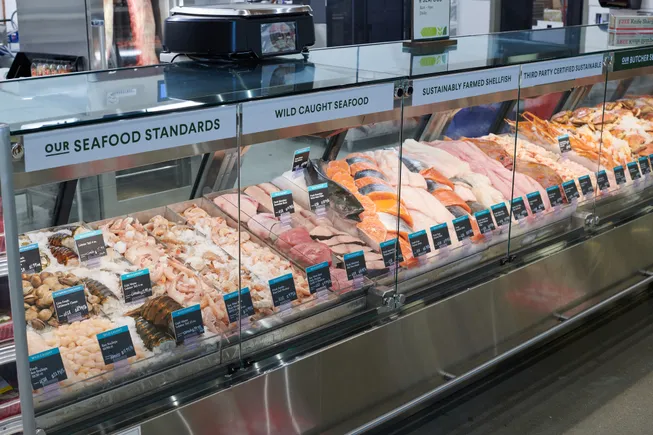Table of Contents
Dive Brief:
- While seafood experienced a decline in sales in 2024, the frequent seafood shopper demographic presents a growth opportunity for food retailers, as per FMI — The Food Industry Association’s latest Power of Seafood report.
- The number of frequent seafood shoppers has increased over the past five years, with this group known for shopping more often, having higher incomes, and making larger purchases when buying seafood, according to FMI.
- Grocers are encouraged to convert more customers into occasional or frequent seafood shoppers by dispelling misconceptions about seafood being expensive or difficult to prepare, and by educating consumers about its health benefits, stated Rick Stein, vice president of fresh foods at FMI.
Dive Insight:
Despite a decrease in seafood prices last year, consumers still perceive seafood products as a luxury or indulgence purchase, notes FMI. Reasons for reduced seafood consumption frequency in the U.S. include inflation, pricing compared to other proteins, and total purchase costs, according to the trade firm.
However, 81% of surveyed frequent seafood shoppers believe that the seafood they buy is affordable.
By the numbers
$23.4 billion
Annual sales of all seafood products last year
-1.2%
Revenue growth of seafood in 2024
1%
Unit growth of seafood in 2024
$103
Average basket size with any seafood item
Frequent seafood shoppers, who tend to be affluent and educated with an average household income of $100,000 per year, are considered valuable customers for grocers, spending more on groceries compared to non-seafood consumers, according to FMI.
While wealthier consumers are the main seafood buyers, the positive perceptions of seafood extend across income groups, emphasizing health benefits, easy preparation, affordability, and sustainability, presenting an opportunity for grocers to highlight these benefits in their seafood offerings.
Customers are interested in discovering new ways to prepare seafood, and grocers can provide recipes emphasizing convenience and ease of cooking. Retailers should cater to shoppers’ desire to plan purchases and meals by offering tools and assistance through in-store signage, packaging, and digital platforms.
Although only 44% of seafood consumers have purchased seafood online, there is potential for grocers to promote seafood as an online option to capture more customer spending. Digital platforms can serve as effective communication channels with seafood consumers.
Enhancing store loyalty is crucial as most seafood shoppers explore different retailers for seafood purchases rather than relying solely on their primary grocery store, according to FMI.
While supermarkets remain the top choice for seafood shopping, they have faced competition from other retailers since 2020.
Share of seafood shoppers who consider these formats their primary store for seafood
Seafood counters play a significant role in showcasing quality within the department. A majority of shoppers without access to a seafood counter in their main grocery store express interest in having one.

